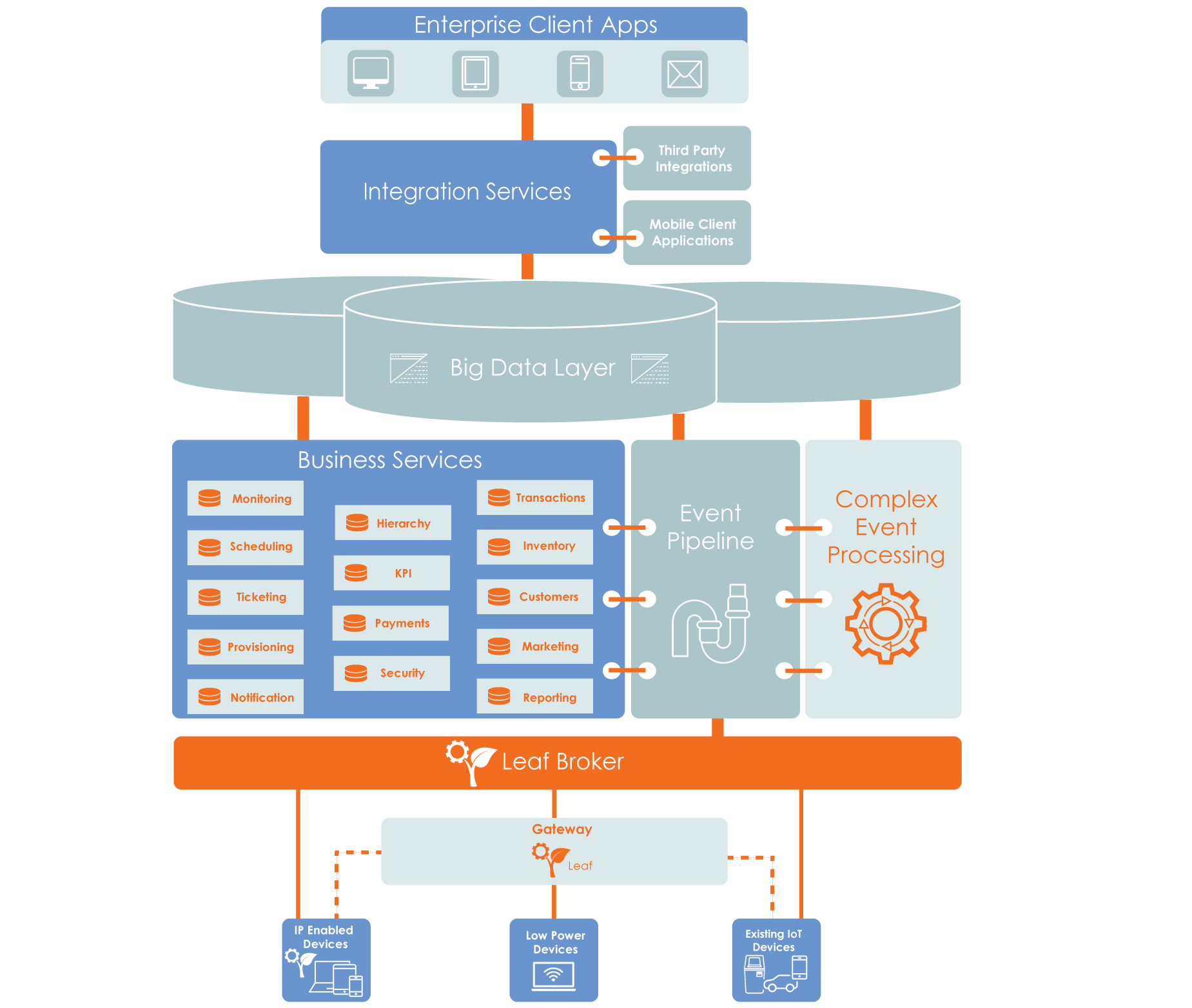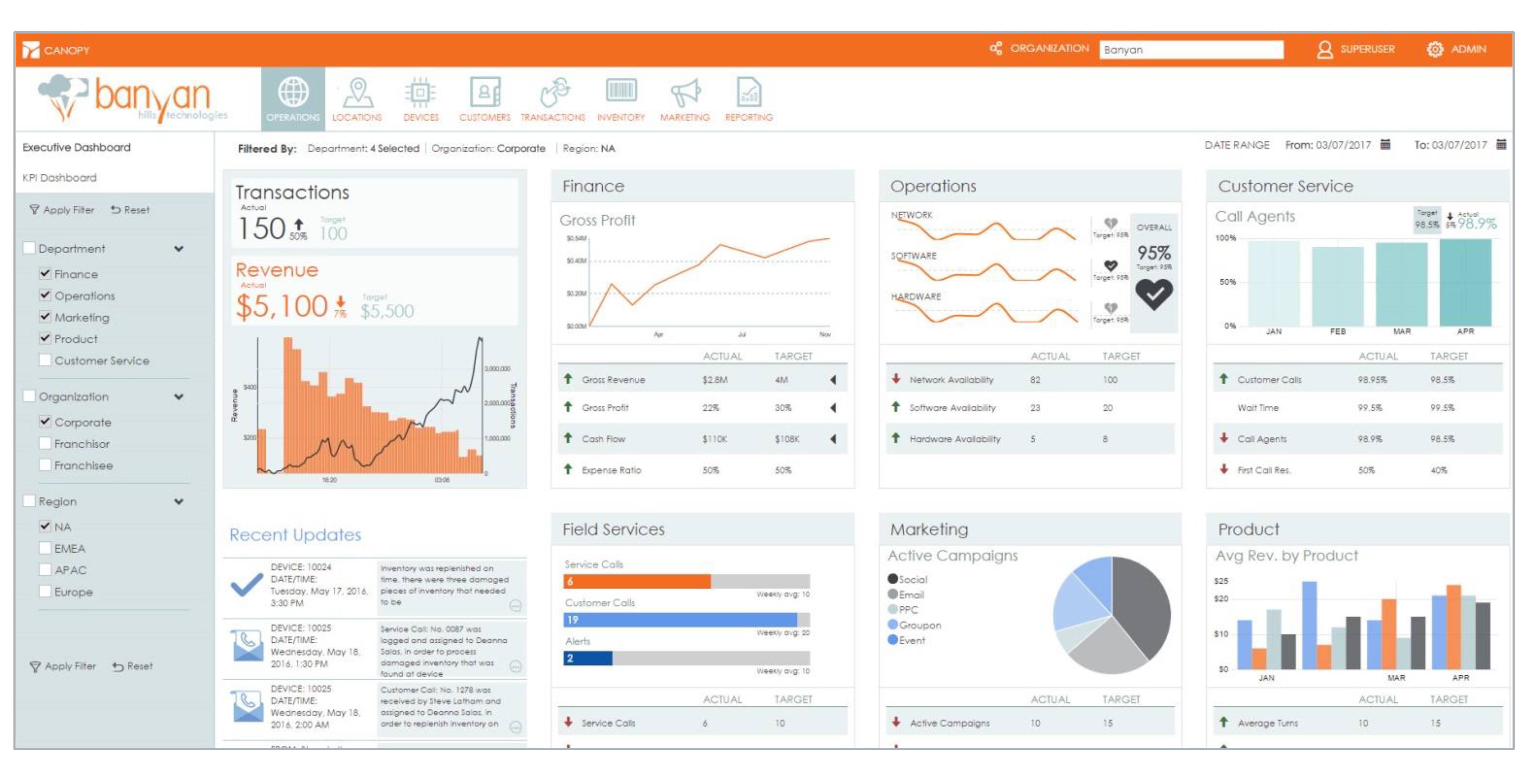Predictive Maintenance for More Resilient Self-Service Vending
In an era when consumers are more accustomed to interacting with automated systems than people, the popularity of self-service kiosks and vending machines continues to rise.
In fact, the Harvard Business Review reveals that food service companies are seeing increased sales from their self-service platforms versus conventional channels. The shift is largely attributed to users having greater access and more options.
Outside of an uptick in revenue, retailers benefit from self-service kiosks in a number of ways. Most notably, the cost of these systems is much lower than traditional brick-and-mortar stores, both in terms of CAPEX (maintaining a functional retail space) and OPEX (compensating human employees).
But automated kiosks and vending machines also face challenges related to downtime. When a system is down due to component failure, system malfunction, or inventory shortage, operators may not become aware of it for several days.
Revenue opportunities are constantly being lost during these periods and, more important, consumer confidence drops. Users who encounter a non-functional machine more than once may disregard it altogether and take their business elsewhere.
One way self-service retail operators combat downtime is through IoT platforms that allow remote monitoring of connected kiosks and vending machines. In some cases, IoT platforms also provide management capabilities, such as the ability to improve applications and device performance using over-the-air (OTA) software and firmware updates.
But even these tools can come up short when dealing with large fleets of unattended retail systems. For example, service technicians may already be backlogged with other jobs by the time the problem is identified. And when remote management is used to deploy a fix, it is usually in response to a problem that has already affected an entire installed base of systems.
In both instances, it's too late to prevent downtime.
Machine learning and predictive maintenance offer a better approach. By recognizing signs of impending failure, these techniques allow vending machine operators to fix problems before they occur. The catch is that these technologies require significant intelligence within the vending machine itself.
Increasing Kiosk Uptime with Machine Learning and Predictive Maintenance
One company delivering these capabilities to the self-service kiosk and vending machine industry is Banyan Hills Technologies, developers of the Canopy IoT Platform. Like many other IoT cloud platforms, Canopy is a central monitoring and management solution for large networks of connected devices. Unlike many of them, it uses an embedded software field agent, Leaf.
Leaf is a small piece of hardware- and operating system-agnostic (OS-agnostic) code that resides on IoT edge nodes such as connected kiosks and vending machines. Once installed, the Leaf agent can send a variety of operational data such as CPU temperature, memory, available disk space, and other information into an Event Pipeline. The Event Pipeline is tightly integrated with a Complex Event Processing engine that, after interpreting data from Leaf agents, passes it along to big data repositories in the Canopy cloud (Figure 1).

What's significant about this architecture is that it generates a bidirectional data flow. Real-time system status information from Leaf agents streams northbound while historical trends from Canopy's big data layer head the other way.
These two data sets converge in the Complex Event Processing engine, which leverages machine learning to enable self-diagnostics, automated dispatch, and a path to predictive maintenance (Figure 2). All of this is possible on a system-by-system basis.

Take, for instance, a card reader on a self-service kiosk. Historical records from Canopy's big data layer might indicate that card readers on a certain kiosk model have an average useful life expectancy of 500,000 swipes before breaking down.
In parallel, the Leaf software agent on kiosk 005 is reporting an inconsistent serial port connection to its card reader, as well as a statement that the system has just completed transaction number 494,015. Through the application of machine learning technology, the Complex Event Processing engine is not only able to diagnose that the card reader module likely needs to be replaced, but also trigger an automatic alert that dispatches service technicians to the kiosk's location.
Real-time alerts can be delivered by the Canopy IoT Platform via email, text, or push notification, while automated dispatches can be configured to trigger for extremely common or very specific types of system failure.
Metrics Modules Eye Business Intelligence
Beyond predictive maintenance, the Canopy IoT Platform also includes provisions for business intelligence. These are delivered as a set of flexible, cloud-based reporting modules that allow decision-makers to evaluate operations based on current status, fiscal targets, actual performance, and recent trends (Figure 3).

Metrics track key performance indicators (KPIs) in segments such as location, marketing, and transactions. Inventory is another KPI module that can be dissected down to the individual system level to improve uptime and consumer satisfaction.
Each of the aforementioned KPI modules can be enabled or disabled within the customizable Canopy web portal to meet the needs of specific businesses or industries.
Predicting Increased Customer Loyalty
The self-service kiosk and vending industry is a great example of how advances in automation can improve both quality of life and the bottom line. But it also cautions that, if not deployed, managed, and maintained properly, technology can disrupt every business's most valuable asset: its relationship with customers.
Separately, IoT cloud platforms and embedded technology components only partially address the balance between automation and user satisfaction. Together they can help us predict the future, whether that is better maintenance, increased sales, or improved consumer loyalty. Regardless, each has one thing in common: uptime, all the time.